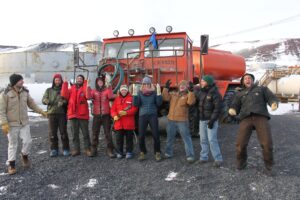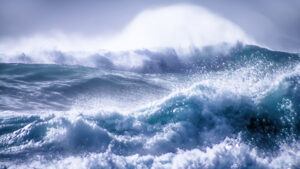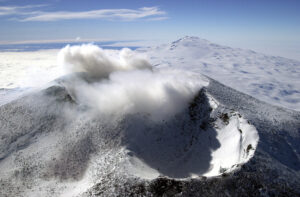Doing anything in Antarctica is pretty hard. But riding a bicycle across its varyingly prohibitive surfaces might be among the hardest.
It’s not that cycling is physically harder or more dangerous than any other means of getting around the continent. It’s just that it’s almost impossible for a cyclist to get any purchase with their tires.
Omar Di Felice is about to find out for himself — on the longest cycling route anyone’s ever attempted in Antarctica.
The experienced long-distance cold-weather cyclist will head toward the South Pole from the popular starting point of Hercules Inlet. When and if he reaches the Pole, he’ll hop on an access road that leads to McMurdo, a U.S. research station.
If Di Felice completes the trip, he’ll reportedly cover about 1,600km — and blow the current Antarctic cycling record out of the water in the process. That currently belongs to Daniel P. Burton, who biked 1,247km between Hercules Inlet and the South Pole during 2013-14.
As of now, Di Felice is staging for his departure to the continent from Italy. A cycling outlet based in his country, Bicidastrada, reports that he will begin — they call it his “indicative date” — either Nov. 19 or 20.
Di Felice will ride with no supply drops or other assistance along the route. (Of course, he can access supplies, food, shelter, etc., at McMurdo.) Note that according to the Polar Expeditions Classification Scheme (PECS), his use of the road constitutes support, so he can’t claim an unsupported crossing.
How to cycle in Antarctica: walk when you have to
It’s important to interpret the concept of “biking” loosely in Antarctica. Several experts told ExplorersWeb that the terrain forces cyclists to do a lot of walking.
Eric Larsen attempted a solo coast-to-South Pole bike ride in 2012. According to him, cyclists are up against the odds in Antarctica for a few key reasons.
One is that the largely featureless landscape makes staying on track hard. Another is that keeping the wheels moving through deep snow with a supply-laden rig can be impossible.
“You basically know whether you’re going uphill or downhill. If the horizon looks close to you, then you’re going uphill — if it looks far away, you’re going downhill. That’s about it,” he said.
VariED surface conditions add to the difficulties. You can find yourself skating across hard-packed snow, churning through a thin layer of very loose, dry powder, or navigating between sastrugi.
It’s all incredibly hard to ride through, Larsen said. For that reason, most bikepackers find themselves walking a lot along their routes. Di Felice’s route choice should help him make significantly better time on the second and third legs.
But how much pushing or pulling a bike constitutes “cycling”? Whether the Antarctic exploration community validates Di Felice’s attempt will probably come down to personal opinion. Larsen allowed freely that cycling off-road in Antarctica means walking your bike. And that’s what most cyclists have done on the continent, historically.
Polar guide Eric Philips put Di Felice’s obstacles bluntly.
“Omar will only have a shot in hell (using the bike/s I see on his site) if he follows a road the whole distance. There is no two-wheel bike that currently has the technology to ride on virgin plateau,” he said.
Road riding could bring quibbles
Nevertheless, Di Felice will be attempting a longer route than any previous cyclist in Antarctica. Along with his gear, planning, and fat bike, he has one critical tool to use: deep-seated motivation.
“I discovered [Antarctica’s] existence as a child. I started dreaming about it as a teenager. I have worked hard every single day of my life, and God knows when I closed the door of my room during the night how many times I have tried in vain to imagine myself cycling there,” Di Felice wrote on Facebook.
“I still have fear as big as that continent of ice. [But] I cradled within me the hope that someday I would be ready enough to cross it. As I write these words, watching the video that contains the meaning of my whole life, I can hardly stop the tears. They are tears of pride for proving to myself that it would be possible.”






